Perfect Placement – Pin positions at Masters
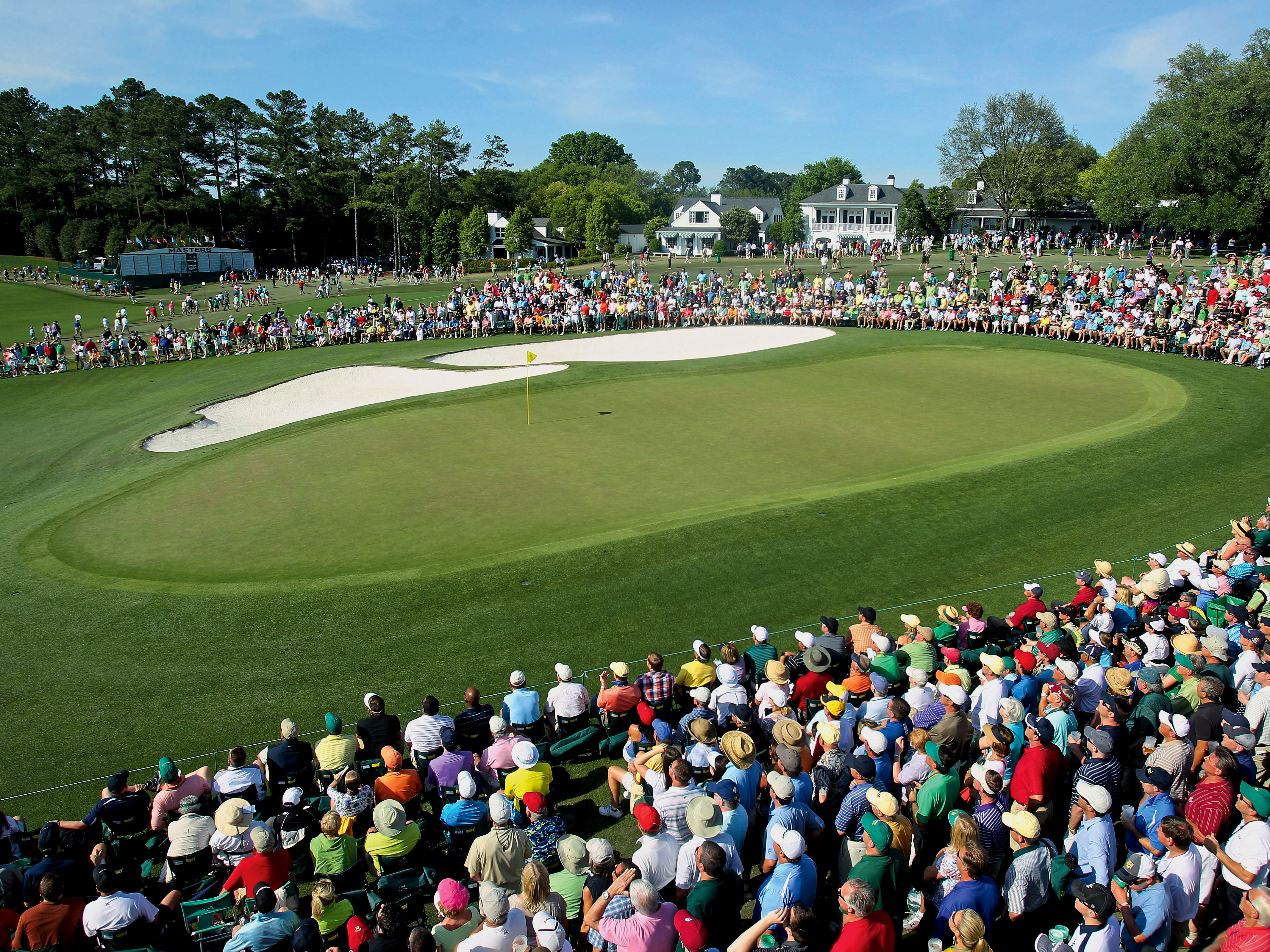

Fergus Bisset looks at the impact of the differing pin positions at Augusta National - and how the pros attack them
Perfect Placement – Pin positions at Masters
Augusta is one of the most versatile courses in world golf. There are few, if any, layouts where the difficulty of the holes can be affected so dramatically by the choice of pin position. The stats from the 2014 tournament show some incredible variations in the difficulty ranking of holes from one day of competition to another.
To a certain extent this is down to changing winds and tees moving up or back but, more significantly, the difference is because of shifting pin positions. On a number of holes at Augusta the tournament committee has the power to turn a realistic birdie chance into a potential banana skin, simply by moving the flag a few yards.
Here, we look at the holes at Augusta where the choice of pin location has the most substantial bearing on the challenge the players will face each day in the year’s first Major; The flags demanding respect that cause bogeys and worse, and those inviting aggression that generate birdies.
HOLE 4 - FLOWERING CRAB APPLE
Get the Golf Monthly Newsletter
Subscribe to the Golf Monthly newsletter to stay up to date with all the latest tour news, equipment news, reviews, head-to-heads and buyer’s guides from our team of experienced experts.
2014 Toughest Day: Round 3 – Avg. score 3.71, Rank 1st (pin front)
2014 Easiest Day: Round 1 – Avg. score 3.28, Rank 7th (pin back left)
This short hole provides a great early-round example of the importance of pin positions at Augusta. When the flag is in the front section of the green, on the narrow portion between the two bunkers, it’s incredibly difficult to get the ball close, there’s only the tiniest margin for error either left or right. If a player does stray laterally, the shot from in (or around) either of those bunkers is devilishly difficult – trying to flip the ball up and stop it on an area of green the size, and speed, of a snooker table. With the pin in this location in round 3 last year, this was the hardest hole on the course by some margin, there were six double bogeys that day – three more than on any other hole. If the pin is at the back of the green, as it was in round 1 last year, there’s more space to miss on either side and an up-and-down is far more feasible.
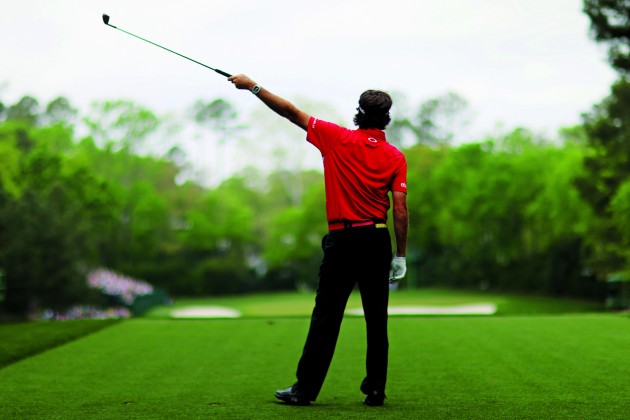
HOLE 7 - PAMPAS
2014 Toughest Day: Round 3 – Avg. score 4.45, Rank 3rd (pin front centre-left)
2014 Easiest Day: Round 4 – Avg. score 3.98, Rank 13th (pin front right)
On Saturday in 2014, the pin was at the front of the green, just over the bunkers and extremely difficult to get at. A fraction short meant sand, a hair right and the ball drifted away to the front right of the green, just long resulted in an incredibly slippery putt, chip or bunker shot back down the slope. The hole was the undoing of John Senden who’d been in contention through two rounds. His second shot was short and his third caught the wrong side of the slope, filtering to the right, he three-putted for a double-bogey and slid down the leaderboard. On the Sunday the pin was positioned in the lower front-right of the green with everything feeding towards it. So there was a far bigger target to aim for and still get the ball close. There were 16 birdies on this hole in the final round compared to just two on the Saturday. With the pin front right, this hole is a huge birdie chance. With the pin front left, it’s take par and move on!
HOLE 9 - CAROLINA CHERRY
2014 Toughest Day: Round 2 – Avg. score 4.19, Rank 9th (pin back left)
2014 Easiest Day: Round 3 – Avg. score 3.94, Rank 14th (pin centre right)
It’s extremely difficult to get close to this flag when it’s way up in the back left portion of this green. It’s a small target protected by a bunker in front so it’s easy to go long, leaving a treacherous chip back down the slope. On the final day, the pin is normally positioned towards the front left of the putting surface and anything spinning too much will back-up off the green in the style of Greg Norman in 1996. From beyond the flag to the right, players face an incredible putt. This is where you’ll see them starting the ball at right angles to the cup and crossing their fingers that it will stay on the putting surface.
HOLE 11 - WHITE DOGWOOD
2014 Toughest Day: Round 2 – Avg. score 4.59, Rank 1st (pin back left)
2014 Easiest Day: Round 4 – Avg. score 4.26, Rank 4th (pin front right)
This is the hardest hole on the course when the pin is positioned to the left side of this green, as it tends to be on the first two days. Going at the flag is only for the very bravest as it brings the water into play. So players tend to bail out to the right side. In Round 2 last year there were 10 double bogeys on this hole – twice as many as any other on the course that day. Many, like Jonas Blixt’s came as a result of being too greedy and finding water as a result. In round 4 the pin is generally positioned more to the front and right of the green, allowing the players a chance to be a little more aggressive. Look for the best iron players to attack on this one in round 4.
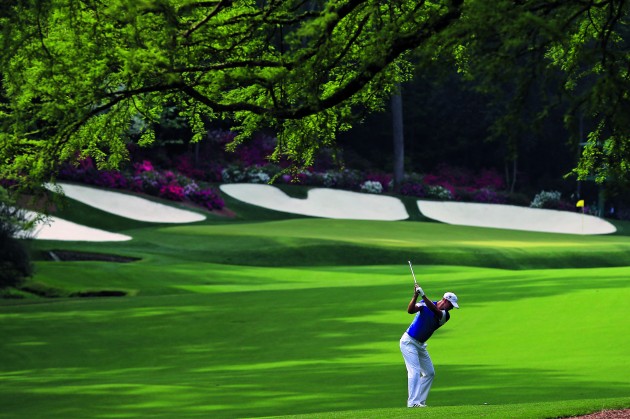
HOLE 13 - AZALEA
2014 Toughest Day: Round 3 – Avg. score 4.75, Rank 16th (pin back right)
2014 Easiest Day: Round 4 – Avg. score 4.45, Rank 18th (pin front)
This hole is one of the easiest on the course by ranking, no matter where the pin is positioned. However, when it’s in the front portion of the green, as it tends to be on the final day, the players view it as a must-birdie. The green slopes from back to front and left to right and, when the pin is in the front section, shots fired into the middle of the putting surface will feed down to it: Remember Seve’s second shot to set up a last round eagle in 1986? When the flag is at the back of the putting surface, either on the left or right side, it’s extremely difficult to get the ball close to it. And going long is not clever. From through the green, with the pin at the back, it’s nigh on impossible to get the ball onto the putting surface and stop it before it takes the slope and disappears to the front of the putting surface and Ray’s Creek beyond.
HOLE 14 - CHINESE FIR
2014 Toughest Day: Round 2 – Avg. score 4.31, Rank 3rd (pin centre)
2014 Easiest Day: Round 4 – Avg. score 4.04, Rank 12th (pin right)
The green on this hole slopes viciously from its centre to the right side. So the most difficult pin position is when the flag is perched just at the top of that slope. Anything aimed just right of the flag will drift away to the bottom section of the green. If a ball misses the green long or left, the shot back is fraught with danger as, if struck too hard, it will fall away to the lower part of the putting surface. When the pin is on the right side, as it often is in round 4, it’s far more accessible. If a player is able to get the distance right, there’s a wide target to aim for, from where the ball will roll down towards the flag: One to attack for those in the chase on Sunday.
HOLE 16 - REDBUD
2014 Toughest Day: Round 3 – Avg. score 2.98, Rank 12th (pin front left)
2014 Easiest Day: Round 4 – Avg. score 2.73, Rank 16th (pin back right)
The green on this par-3 slopes hugely from right to left, so when the pin is on the left side (as it always is on the final day – think Tiger Wood’s miracle chip in 2005,) the ball will feed towards it. If a player gets the correct distance and doesn’t aim too far right, he’ll have a realistic birdie chance. When the pin is on the back right portion as it was in round 1 last year or the front right portion as in round 3, the tee shot must be extremely precise to avoid falling away from the cup and down the slope. Right pins require the player to land the ball within a few feet of the flag on either side to avoid a very tricky second.
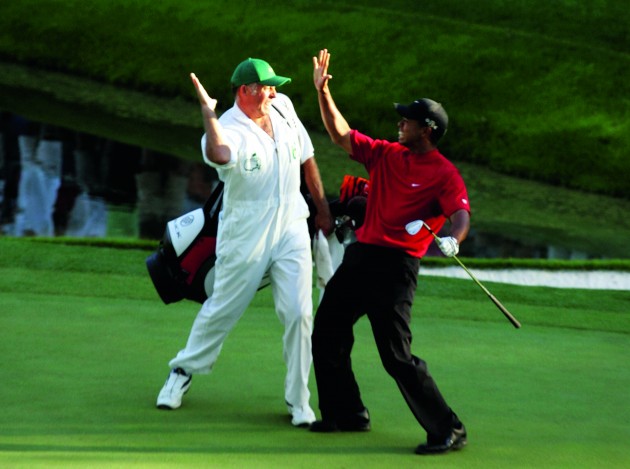
HOLE 17 - NANDINA
2014 Toughest Day: Round 4 – Avg. score 4.37, Rank 2nd (pin front centre right)
2014 Easiest Day: Round 1 – Avg. score 4.18, Rank 11th (pin right)
This is one of the most challenging greens on the course and pin positioning makes a massive difference. In round 1 last year, the flag was situated on the right side – not only one of the flatter sections of the green but also its low point, so anything aimed just to the left of the flag fed towards it. When the pin is positioned just a little further to the left, the proposition is very different – anything missing to the right of the flag feeds away to the low point of the green. Anything long or further left leaves a devilish pitch or long putt down to a pin sitting on a precipice – just too firm and the ball runs away to the green edge, too timid and the player will face the same problem with the next shot. The pin is so tough to get at when it’s in this position that there was only one birdie in the final round last year, by Justin Rose.
HOLE 18 - HOLLY
2014 Toughest Day: Round 1 – Avg. score 4.39, Rank 3rd (pin front right)
2014 Easiest Day: Round 2 – Avg. score 4.08, Rank 12th (pin back centre)
The final hole is most straightforward when the pin is at the front of the green as the ball will drift back towards it if landing slightly long, think of Sandy Lyle’s bunker shot in 1988. Conversely, when the pin is towards the back of the green the challenge is severe and an approach has to be extremely precise to avoid falling away from the cup either short, left or long. When the pin is towards the back of this green, three putts are common. Tom Watson three-putted for a double bogey six here in 1991 to lose out by two to Ian Woosnam.
FLAG HUNTERS – The players with the accuracy and/or courage to go straight at Augusta’s most precarious pins
Rory McIlroy – He’s now solidified his position as the World’s Number 1 player and he’s one of the very best ball-strikers in the game. McIlroy has proved in the past he’s not afraid of playing aggressively at Augusta and, with his length off the tee, he can fire into the more inaccessible pins with less club than most. He currently leads the European Tour for Greens found in Regulation, confirming his proficiency with an iron in his hand. Look for him to attack when the opportunity arises.
Phil Mickelson – Phil is a little less predictable than McIlroy in terms of accuracy, but there’s no doubting his commitment to the cause. He’s one of the most aggressive players in the world and he’ll take on any shot and fire at any flag; Think of his miraculous second from the pine straw in 2010. Mickelson also trusts his short game implicitly so has no fear of the next shot should his approach miss its target.
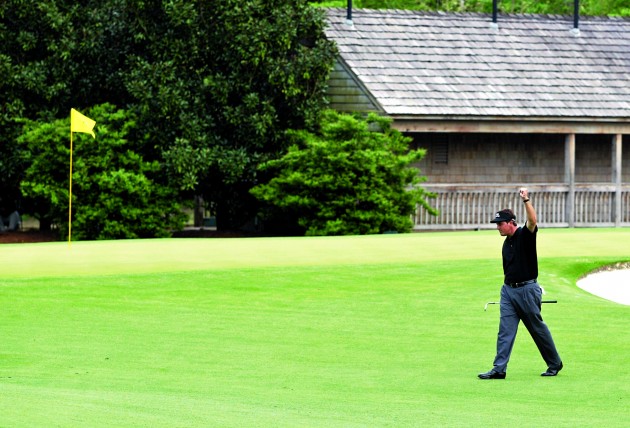
Lee Westwood – Over the years, Westwood has proven his ability to fire iron shots straight at the stick, time and time again. He has a good record at Augusta over the last five seasons – his worst finish in that time being a tie for 11th place. One of the key reasons for that success has been his precision with approach play. He’ll play more strategically than, say, Mickelson and will choose which battles to fight. But look for him to be aggressive and stick a few in to tap-in distance.
Hideki Matsuyama – The Japanese player is one of the most accurate iron players in world golf right now. In 2014 he led the PGA Tour in proximity of approaches between 150 and 175 yards – those are the shots that the players have to get spot-on at Augusta to find the trickiest pin spots, so Matsuyama should have the perfect game for this course.

Fergus is Golf Monthly's resident expert on the history of the game and has written extensively on that subject. He has also worked with Golf Monthly to produce a podcast series. Called 18 Majors: The Golf History Show it offers new and in-depth perspectives on some of the most important moments in golf's long history. You can find all the details about it here.
He is a golf obsessive and 1-handicapper. Growing up in the North East of Scotland, golf runs through his veins and his passion for the sport was bolstered during his time at St Andrews university studying history. He went on to earn a post graduate diploma from the London School of Journalism. Fergus has worked for Golf Monthly since 2004 and has written two books on the game; "Great Golf Debates" together with Jezz Ellwood of Golf Monthly and the history section of "The Ultimate Golf Book" together with Neil Tappin , also of Golf Monthly.
Fergus once shanked a ball from just over Granny Clark's Wynd on the 18th of the Old Course that struck the St Andrews Golf Club and rebounded into the Valley of Sin, from where he saved par. Who says there's no golfing god?
-
 Rory McIlroy vs Bryson DeChambeau: Who Are We Picking To Win The 2025 Masters?
Rory McIlroy vs Bryson DeChambeau: Who Are We Picking To Win The 2025 Masters?We're set up for a blockbuster final day at Augusta National where Rory McIlroy and Bryson DeChambeau play together in the final group
By Elliott Heath Published
-
 The Masters Crystal Rory McIlroy Has Already Won At Augusta National This Week
The Masters Crystal Rory McIlroy Has Already Won At Augusta National This WeekMcIlroy leads going in to the final round at Augusta National, with the four-time Major winner already bagging some silverware before he looks to claim the Green Jacket
By Matt Cradock Published